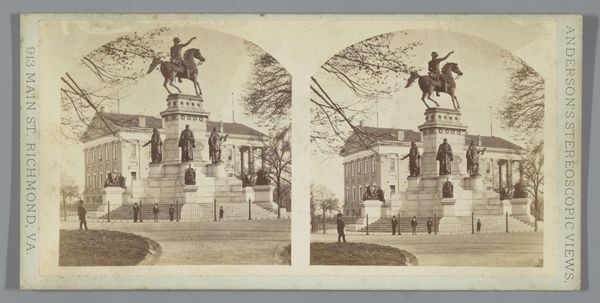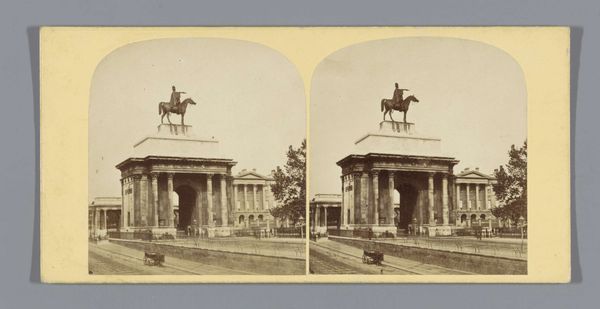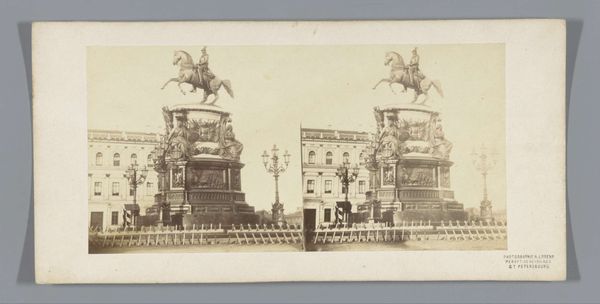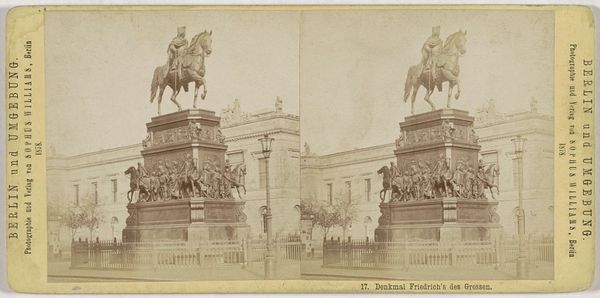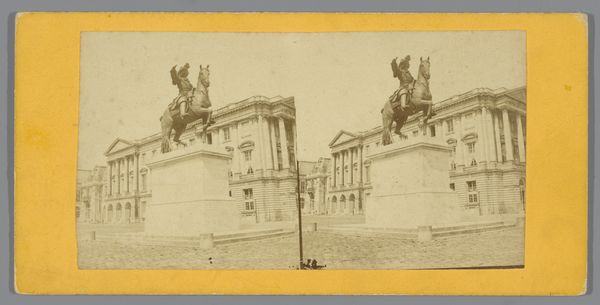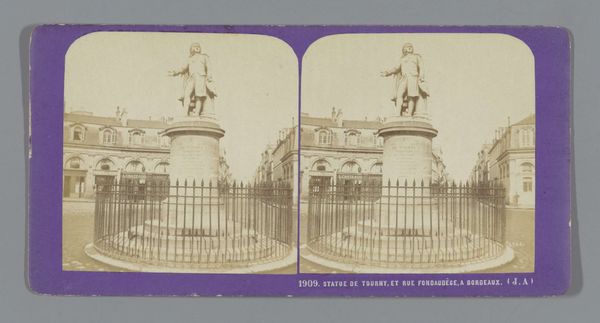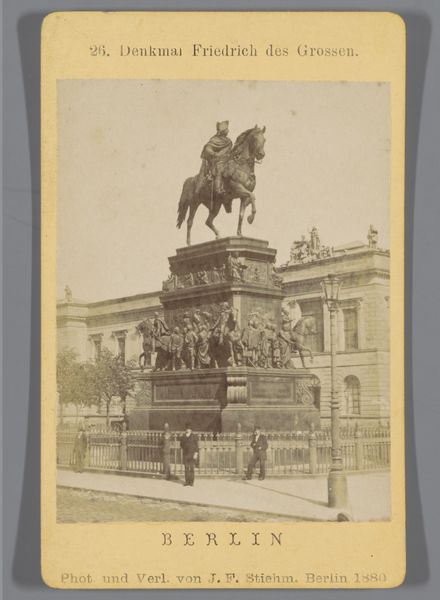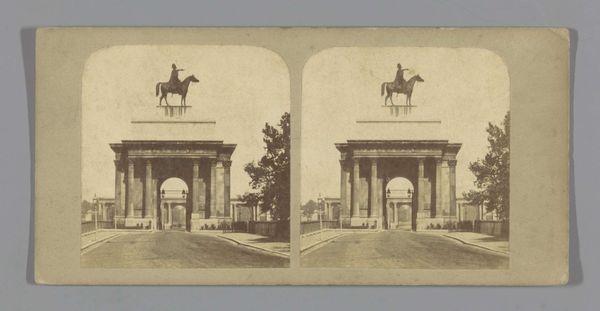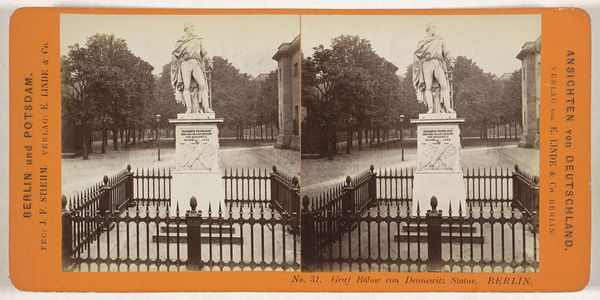
Ruiterstandbeeld van Karel XIV Johan van Zweden op het Karl Johans Torg in Stockholm 1860 - 1890
0:00
0:00
photography, sculpture
#
portrait
#
muted colour palette
#
sculpture
#
landscape
#
photography
#
geometric
#
sculpture
#
cityscape
#
realism
Dimensions: height 84 mm, width 170 mm
Copyright: Rijks Museum: Open Domain
Editor: Here we have a photograph from between 1860 and 1890, titled "Equestrian Statue of Charles XIV John of Sweden on Karl Johans Torg in Stockholm," by Ferrier Pére-Fils et Soulier. The muted tones give it a timeless feel. What do you make of its composition? Curator: This stereo photograph provides a dual representation of a monument – highlighting not just its form but its context within the urban landscape of Stockholm. Consider the materiality of both the subject and the object: the bronze of the statue, likely extracted and transported through complex colonial supply chains, stands in stark contrast to the photographic process, which uses light and chemistry, often involving exploitative labor in silver mines. Does the photographic technique itself contribute to the glorification of power, or does it inadvertently expose the socio-economic underpinnings of its production? Editor: I hadn't considered the raw materials involved. Does focusing on materials change our understanding of the statue's purpose? Curator: Absolutely. This image documents a public artwork meant to embody authority. But through a materialist lens, we might ask, who profited from the mining, transportation, and sculpting of the bronze? Who benefited from the manufacture of the photographic plate and paper? These seemingly mundane aspects were instrumental in shaping the final artwork, imbuing it with social and economic significance far beyond the purely aesthetic or symbolic. Editor: So, by thinking about the resources and labor involved, we move beyond the surface-level image of a king on a horse? Curator: Precisely! We unearth a history of industrial practices, resource extraction, and labor that often remains hidden. What was originally created as a monument, in turn becomes a subject of study regarding resource economy, commerce, and the development of both Swedish royalty and early photography. Editor: That’s fascinating! I'll never look at public art the same way again. Curator: It’s about understanding that every image, every object, is the result of material processes and social relations. And these, in turn, have profound stories to tell.
Comments
No comments
Be the first to comment and join the conversation on the ultimate creative platform.
